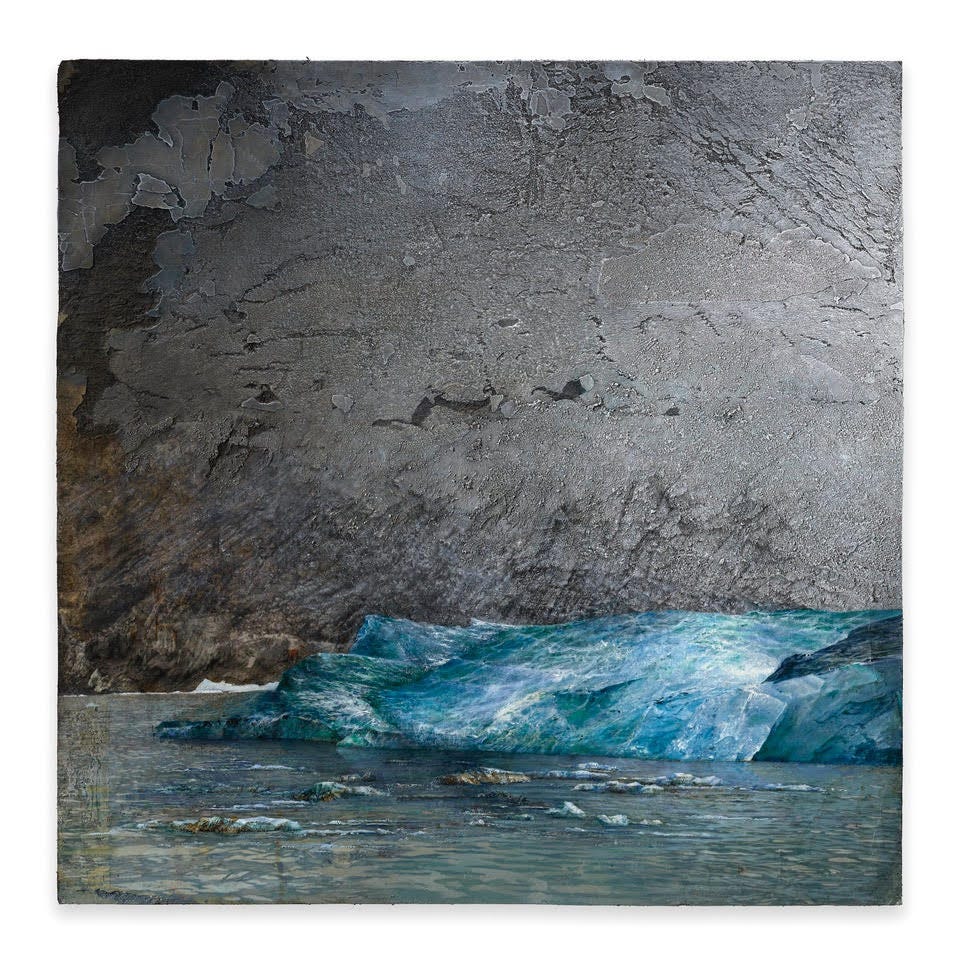
Sunday’s New Year’s post about how seven artists begin a work of art opened the curtain on process – a subject that gets to the juice of what “Ocean in a drop” is about: flowing with the tides and navigating the rip currents of art and life.
Painter Elaine Spatz-Rabinowitz, whose show “Sublime Vestiges,” about “the breakdown of our precious northern landscape and its ice,” opens at Anderson Yezerski Gallery on Friday, provided me with more than just how she began a piece in that show, “Encroachment.” She shared the entire evolution of the painting. I didn’t have space Sunday to publish it all. So here it is, in its entirety, below. Thanks, Elaine, for letting me post this, and for the images.
For more, here’s a link to Elaine’s artist’s statement about the show.
It’s always the last work that gets me started on the next. Because the last work is never all that it could be. By its very Insufficiency it drives me to try again, to push something further, often in the casting process.
There’s another way in as well. Sometimes a completed object can lie abandoned for years, even decades. “Surface-to-Air, Americans in Iraq” was successfully finished in 2007:
But its sister object never came to birth during my war series. In 2020--long returned from the Arctic--it appeared one day as the ideal surface for an iceberg:
Even the blood in the water seemed to work, and most especially the cloud in the “sky” that mimicked the iceberg’s shape:
Years and many detours later I realized the cloud and the idea of sky both were detractions from the unrelenting oppression of the moraine behind the ice, the moraine being what is left as stone rubble on the mountain when all the ice has departed.
Thus was born “Encroachment” (pictured at top) finished just weeks ago. No Iraq war, but if you look closely you can still see a little blood in the water.
I’ve been thinking lately about another related matter: the unspoken grief and mourning that’s part of any “process” painting; insofar as one has to work over and on top of old areas in order to lay in the new ones. I think it was in the making of this painting that I realized how much I was grieving parts that had been vanquished. I tell my students what Picasso said: “if there’s a part in your painting you really like, take it out.” Was it really Picasso? In any case it’s good to dissect what that means with the students. One has to learn to discard, in art and in life!







I love this work!!
Love the spirit and poignancy of your "Begin Again" post and this beautifully expanded version from Elaine Spatz-Rabinowitz. Thanks so much for making space and creating a context for these artists to share their work and words with us.